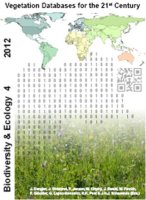Biodiversity & Ecology
Short Database Report Open Access
Polish Vegetation Database
Keywords: plant community; phytosociological record; Poland; relevé.
 English
English
Abstract: The Polish Vegetation Database (GIVD ID EU-PL-001) was created in 2007 at the Department of Biodiversity and Plant Cover Protection, University of Wroclaw. Its aim is to collect all the phytosociological data from the territory of Poland. The database includes mainly vegetation records collected during the last century using the Central European phytosociological method. The sources of the Polish Vegetation Database are mainly published records from regional studies carried out in the territory of Poland. The database also contains unpublished data, mainly from South-western Poland. The largest group of data represents the vegetation of dry and wet grasslands, 40.6% of the total sources of the database, followed by forest and shrub communities (25.6%), anthropogenic vegetation (24.4%), water and peat bogs (8.6%), and other types of vegetation (0.8%). The database aims to support the regional and national synthesis for the classification of vegetation, and studies of biodiversity and vegetation transformation in the Polish plant communities. Data collected in the database is also an important source of information about the distribution of plant communities and valuable habitats of the Natura 2000 Project. Information stored in the database is the basis for assessing the habitat preferences and large-scale patterns of plant species richness or geographical distribution. It will also become the basis for testing new research methods and techniques used in the nature conservation and monitoring of environmental changes.
Suggested citation:
Kacki, Z., Sliwinski, M. (2012): Polish Vegetation Database. – In: Dengler, J., Oldeland, J., Jansen, F., Chytrý, M., Ewald, J., Finckh, M., Glöckler, F., Lopez-Gonzalez, G., Peet, R.K., Schaminée, J.H.J. [Eds.]: Vegetation databases for the 21st century. – Biodiversity & Ecology 4: 411–411. DOI: 10.7809/b-e.00199.


